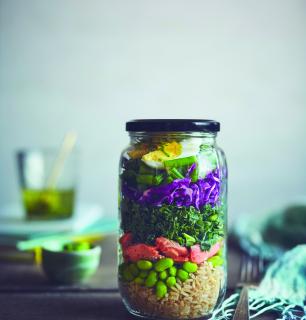— A meal for the ages
Avant de devenir, au XIXe siècle, un divertissement opulent réservé à la haute société, la pause restaurante en plein air a d’abord été la réalité purement alimentaire des humbles travailleurs de la terre. De tout temps, les artistes ont témoigné des transformations culturelles et sociales. En peignant Le déjeuner sur l’herbe, en 1863, Édouard Manet a jeté une bombe dans la cour de l’histoire de l’art, et ses ondes frémissent aujourd’hui encore.
Before it became the domain of the upper class in the 19th century, dining al fresco started out as mere necessity – men and women who worked the land ate outside because they had to. In every era, artists have borne witness to social and cultural change. When he painted Le Déjeuner sur l’herbe in 1863, Édouard Manet lit a fire under art history that is still smouldering today.
Humans are born naked: this is a fact. And it’s just as true that humans ate outdoors before moving inside. We ate with our fingers before we had tools to serve our vanity and our appetite. Shepherds supped in the open air, never far from their flocks, long before Virgil waxed bucolic about it. And those shepherds more than likely had in their pockets a hunk of bread that would serve the next day and the day after that. For a long, long time, eating outdoors was a form of hardship, a sign of accepted poverty.
Our contemporary notion of gastronomic freedom – sitting on a riverbank in summer with a three-inch-high quiche and country tunes – only became possible once we no longer had to break our backs tilling the fields, or jealously guard a golden galette from some covetous bear. In any case, there was no way our ancestors would have been so careless as to eat near a river: the noise of the rushing water would have made it impossible to hear enemies approaching.
The first paintings that showed bread being broken out of doors date back to the 15th and 16th centuries, when Flemish and Dutch painters depicted scenes of gruelling peasant life. Another 200 years would pass before the emblematic checked tablecloth was spread on the grass and before the word picnic was added to the dictionary, which, by the way, failed to mention how much the “great outdoors” had become a privilege of the bourgeoisie.
At the time, dining outside was done in situ; picnickers didn’t travel. The late-19th-century urban shift and the increasing array of means of transportation pushed picnickers to go nomadic, and brought the phenomenon to a head. In 1878, Émile Zola mentioned the Sunday-afternoon migration of half a million Parisians. What had been an aristocratic pursuit became a way of life, an art form. Eating outdoors was a social marker and a source of escape. And it served as a source of inspiration for Édouard Manet, whose painting Le Déjeuner sur l’herbe in 1863 sent shock waves among the educated elite.
Monet, Tissot, Cézanne, Picasso, and on and on: countless giants of the art scene have raised their paintbrushes in answer to Manet’s call. The ripples even reached Canadian shores: in 1964, Jean-Paul Riopelle created his own interpretation of the painting. Time passed, and the bourgeois bubble of outdoor feasts deflated. Hermès and Louis Vuitton picnic sets are brought out only for show. In our touch-and-go society, with carpe diem, or YOLO, as its defining motto, picnics have been democratized. Eating outdoors now evokes more recent values: family, sharing – and unplugging.
The Manet effect
Flash forward to mid-July, this year or last. Imagine a broiling summer sun over Jarry Park. You’re walking toward that little pond tickled by weeping willows. You see two reclining hipsters and a redhead – she’s naked, her body milky against the grass. A raised eyebrow, an elbow to the ribs of your companion: “Check it out!” The bold gaze of the sunbather meets yours. She doesn’t look away, and she sure doesn’t cover herself. The story makes the papers, the popular chorus crying scandal.
In 1863, when Manet’s Le Déjeuner sur l’herbe was exhibited in the Salon des refusés – a tongue-in-cheek idea of Napoleon III to showcase the many artists rejected by the official Salon – a similar controversy erupted. The only differences were the names of the newspapers crowing outrage. And the fact that the cherries, figs and bread in the wicker baskets were all organic, a concept that wasn’t needed then.
For the cognoscenti, Manet’s bucolic scene, so often copied and satirized – notably by Picasso, who produced more than 150 drawings and paintings based on the piece – was one of the first masterpieces of modern art. Was it because the woman in the foreground was nude? Not really, but also yes, kind of.
At the time, nudity was ubiquitous in painting, almost banal, but the naked human form was invariably allegorical, mythological or aesthetic: prepubescent cupids, a bather caught unaware, the ephebos unthreatening behind his fig leaf.
Under Manet’s brush, the clothing of the two male figures undermined the social codes by lending a contemporary air to the scene, making it profane and somewhat pornographic.
To make sure his intention – mocking the tastes and prohibitions of the day – was clear, Manet gave his model an air of utter indifference, without shame, unconcerned. He scattered her clothes and tipped out the contents of her basket. The left corner of the composition even included a frog, “grenouille” being a word used for a prostitute.
It’s said that Manet painted what society sought to hide. His painting became a commentary on bourgeois men of the day, with their countless mistresses and their regular visits to houses of ill repute.
This woman, with her imperfect body and her presumably flawed morals, freaked out the aesthetes of the day, and Manet’s falling out with the academy didn’t help matters. Le Déjeuner sur l’herbe, which incorporated everyday life, portraiture, landscape, and still life, embodied tradition even as it scorned it: the perspective is inconsistent (the bather in the background is disproportionately large), the size of the painting exaggerated (large-scale works were reserved for historical subjects), the sense of harmony subverted (the composition looks like a collage), the style brutal, and the contrasting realism in the eyes of the model proof that the effect was deliberate. “Was Manet the last of the great classical painters,” art historian Françoise Cachin asked, “or the first revolutionary?” Choosing freedom of expression, Manet shattered mythological painting.
Pissarro said,
“Manet was greater than us. He was able to make light out of black.”
Our recipes
See all recipes




